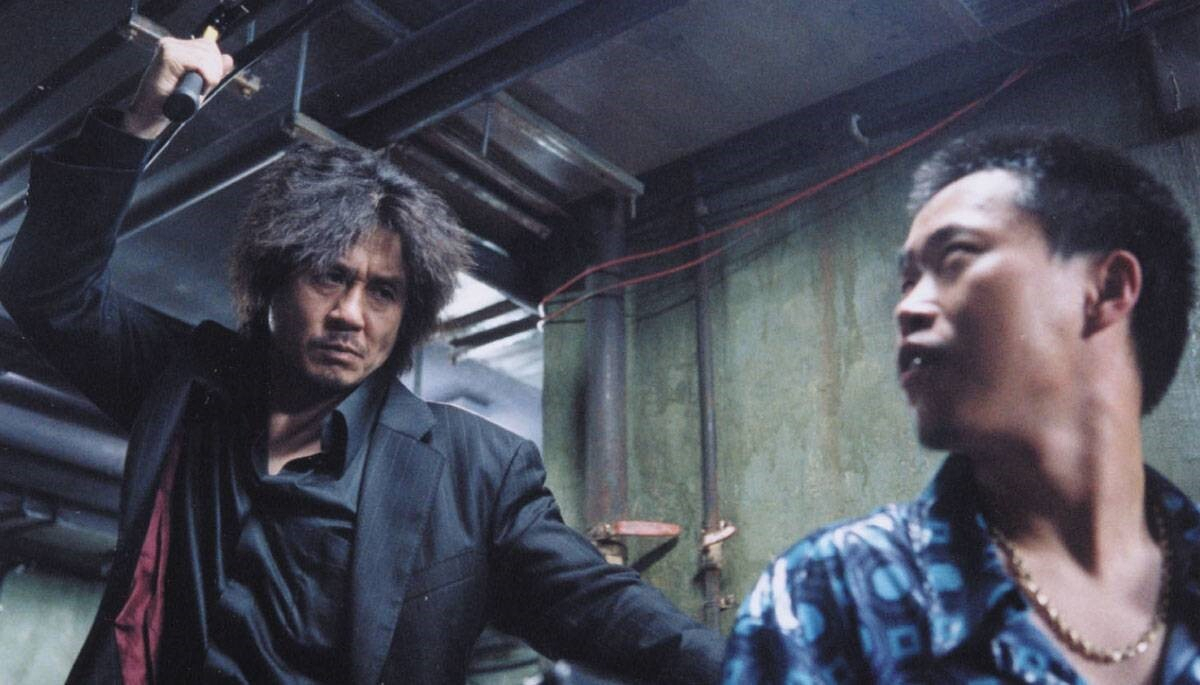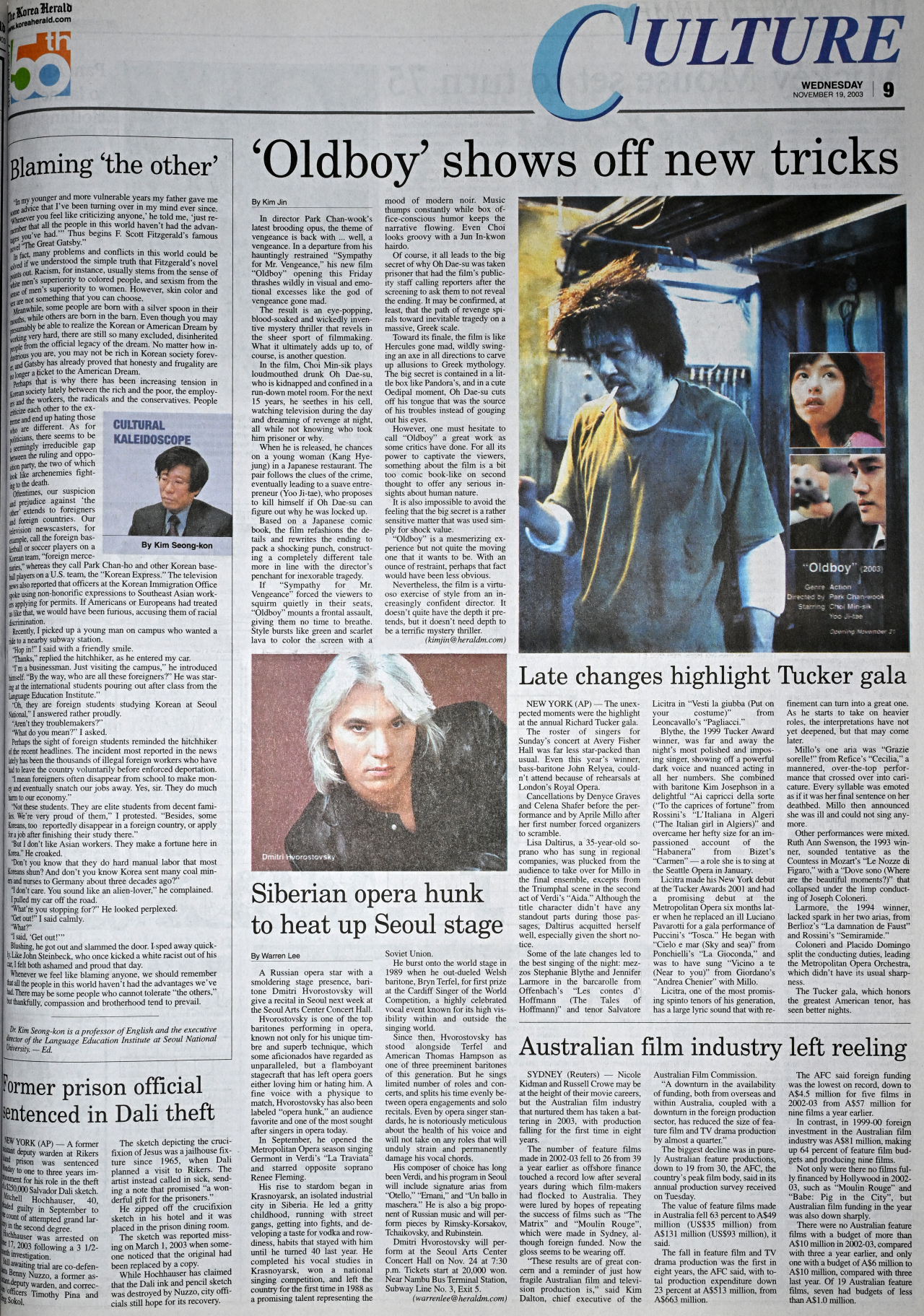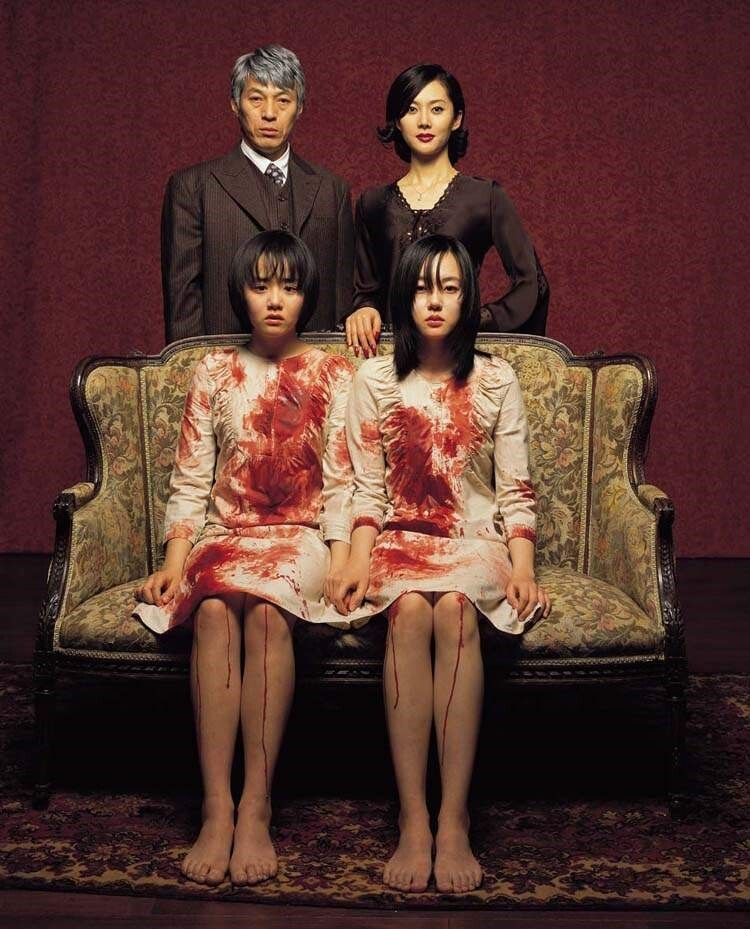 |
“Oldboy” (CJ ENM) |
“South Korea has had the most lively movie industry in the world for the past decade,” remarked French filmmaker Luc Besson during this year’s Busan International Film Festival that closed last week.
Although it may appear as though Korean cinema’s meteoric rise to prominence occurred just over a decade ago or even more recently, its foundation runs deeper. For many, 2003 stands out as a pivotal year when Korean cinema made its mark on the global stage, with films from directors who went on to global renown rolling out one film after another.
“‘Oldboy’ shows off new tricks,” reads the headline of The Korea Herald’s review of director Park Chan-wook’s 2003 magnum opus, which described it as an “eye-popping, blood-soaked and wickedly inventive mystery thriller that revels in the sheer sport of filmmaking.”
Starring Choi Min-sik -- often referred to as “Al Pacino of South Korean cinema” -- the film notched the Grand Prix at the Cannes Film Festival next year.
It was also in 2003 when director Bong Joon-ho released his critically acclaimed “Memories of Murder,” starring another acting genius, Song Kang-ho, in a mystery thriller based on one of Korea's most infamous cold cases.
The Song-Bong duo would later join forces several times, including for 2019’s “Parasite,” the first Korean film to win the Palme d’Or at Cannes and the first non-English-language film to win the Academy Award for best picture.
Bong and Park were joined by their fellow auteurs, who seemed determined to make 2003 a year to remember for Korean moviegoers.
However, the industry wasn’t always like that.
For decades, Korean films languished in the shadows of foreign works and relied on government protection to survive.
A fragile industry
Up until the late 1990s, Korean movies were considered second-tier compared to their foreign counterparts, which completely dominated the local box office.
A 1995 government study by what is now the Korea Culture and Tourism Institute shows that the country produced just 65 movies in 1994, while importing 382 films made in other countries -- 199 of which were from the US. It went on to show that only 15.9 percent of screens were allocated to local films.
For decades, the screen quota system kept the South Korean film scene alive. First introduced in 1967, the clause in the Promotion of the Motion Pictures and Video Products Act mandates that local theaters screen at least one Korean film for a certain number of days per year.
The mandated dates for showcasing domestically produced films in local cinemas varied over time. In 1985, the system was revised to 146 days, ensuring at least a 40 percent share of local movies.
This persisted until 2006, when it was reduced to the current 73 days.
Any talk of revising down the local film quota would meet fierce opposition from filmmakers, actors and others in the industry who insisted that the system was the least the country could do to help local films compete against big-budget Hollywood productions.
But around the turn of the century, things were starting to change.
 |
The culture page of the Nov.19, 2003 edition of The Korea Herald (The Korea Herald) |
In 1999, director Kang Je-gyu’s “Shiri” came out. The espionage film about the inter-Korean conflict was a megahit that boosted investment in local films, and was a breakout film for Song Kang-ho, who would go on to become one of the country's most successful actors.
South Korean films' screen share rose from 39.7 percent in 1999 to 46.1 percent in 2001 and 48.6 percent in 2002. This was boosted by the government pumping 150 billion won ($111 million) in funding for promotion of the films, which compensated for the decrease in investment during the Asian financial crisis that started in 1997.
While the government funding may appear inconsequential compared to big-budget Hollywood films -- the 1997 film “Titanic” cost $210 million to make -- it was a substantial amount in the local film scene. “Shiri” was one of the most expensive Korean movies at the time, and its total budget was 3 billion won, or $2.2 million.
But some film experts claim that this led to a growth in quantity that brought with it a deterioration in quality.
Movie critic Kim Byeong-jae, former head of the Korean Association of Film Critics, said in his research that the government funding and support was focused on commercial films.
The excessive intervention by investors, he claimed, led to most movies gradually catering to the general public. Kim’s own screenplay, initially a drama based on his experience as a news reporter, was changed to an action thriller.
It was also around this time when the “gangster comedy” fad flooded theaters. Although “Marrying the Mafia” was the biggest hit of 2002, these films were harshly criticized for their lack of creativeness and contrived plotlines.
“The external growth of the local movie scene touched off an unwanted side effect of fostering 'Shiri' rip-offs and several gangster comedy movies,” Kim wrote. “The film policy (of the government) forced market forces in the film scene, making it hard for movies of various genres to be made.”
Although to the eyes of some, the Korean film scene may have become overly commercialized, films that would later garner substantial critical acclaim continued to be produced.
Dawn of the golden age
South Korean films rarely got international recognition before 2003. Only three South Korean films in the entire 20th century won prestigious international awards: “The Coachman” won the Silver Bear jury award at the Berlinale in 1961, actress Kang Soo-yeon won best actress at the Venice International Film Festival in 1987 for “The Surrogate Woman,” and 1993's “Hwa-Om-Kyung” won the Alfred Bauer Prize at the Berlinale.
Perhaps 2002 was a prelude to the year of well-made films that would follow, as it produced “Oasis,” which won director Lee Chang-dong the Silver Lion for best director. Its female star Moon So-ri won the Marcello Mastroianni Award for emerging actor at the Venice Film Festival.
The following year, a series of monumental films poured out into the scene.
“Oldboy” continued South Korea's success in international awards. Despite the gritty tone and truly gruesome subject matter, it also became a commercial success with 3.27 million admissions.
“Memories or Murder,” Bong’s second feature-length film, sold 5.25 million tickets and showcased his trademark style of mixing black comedy, visual symbolism and masterful pacing.
 |
"Memories of Murder" by Bong Joon-ho (CJ ENM) |
At times, reaction from critics and the general public did not overlap, as was the case with Jang Jun-hwan’s “Save the Green Planet.” The young director’s first feature-length film, a mix of social satire and dark comedy, tanked in the box office with just over 70,000 admissions, despite garnering critical acclaim both at home and abroad.
Director Kim Ji-un’s “A Tale of Two Sisters” remains one of Korea's most highly-acclaimed horror mysteries, devoid of cheap jump scares and creepy costumes and relying instead on artful visuals and tension from the complicated relationships between the main characters.
It was also in 2003 when the controversial director Kim Ki-duk gained nationwide recognition as the master auteur, with “Spring, Summer, Fall, Winter... and Spring.” The drama delved into stages of life through the theme of Buddhism, and starred “Squid Game” star and eventual Golden Globe winner Oh Young-soo as the wise monk who guides the protagonist.
The film won best picture at the 2003 Blue Dragon Awards and 2004 Daejong International Film Awards, two of South Korea's most prestigious film awards.
While the early 1990s and 2000s were stained by a streak of big-budget action movies that flopped in the box office, Kang Woo-suk’s “Silmido” became the first South Korean film to surpass 10 million admissions. The military action flick, based on the real-life tragedy of a covert operation, opened on Christmas Eve and wrapped up a year of masterpieces that local moviegoers enjoyed.
To this day, 2003 is remembered fondly by both movie fans and those in the industry as a golden year for local cinema. Many in the local film industry built on the success of that year to make South Korean cinema a major player in the global film scene.
 |
Kim Ji-un’s “A Tale of Two Sisters” (Big Blue Film) |







